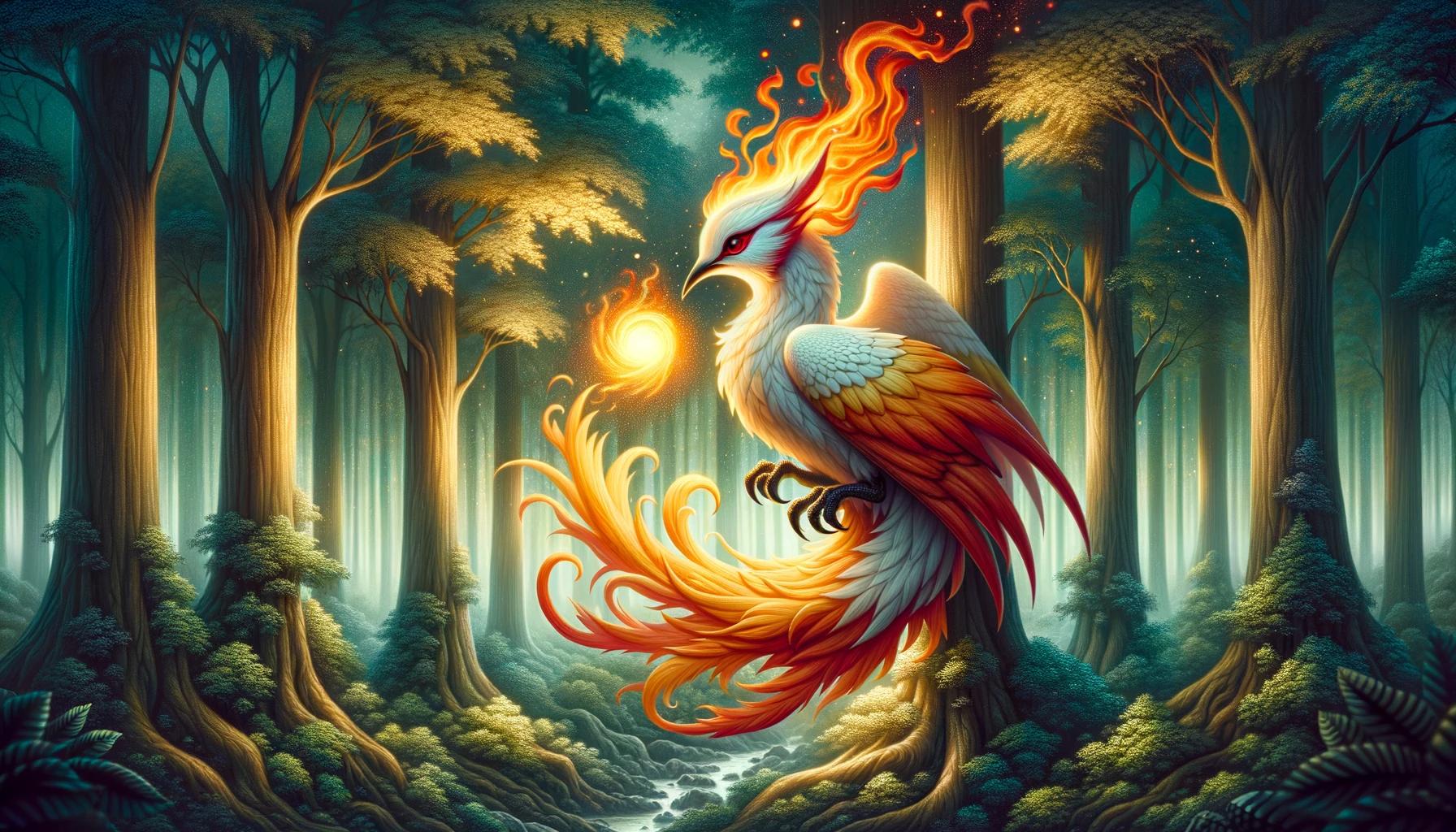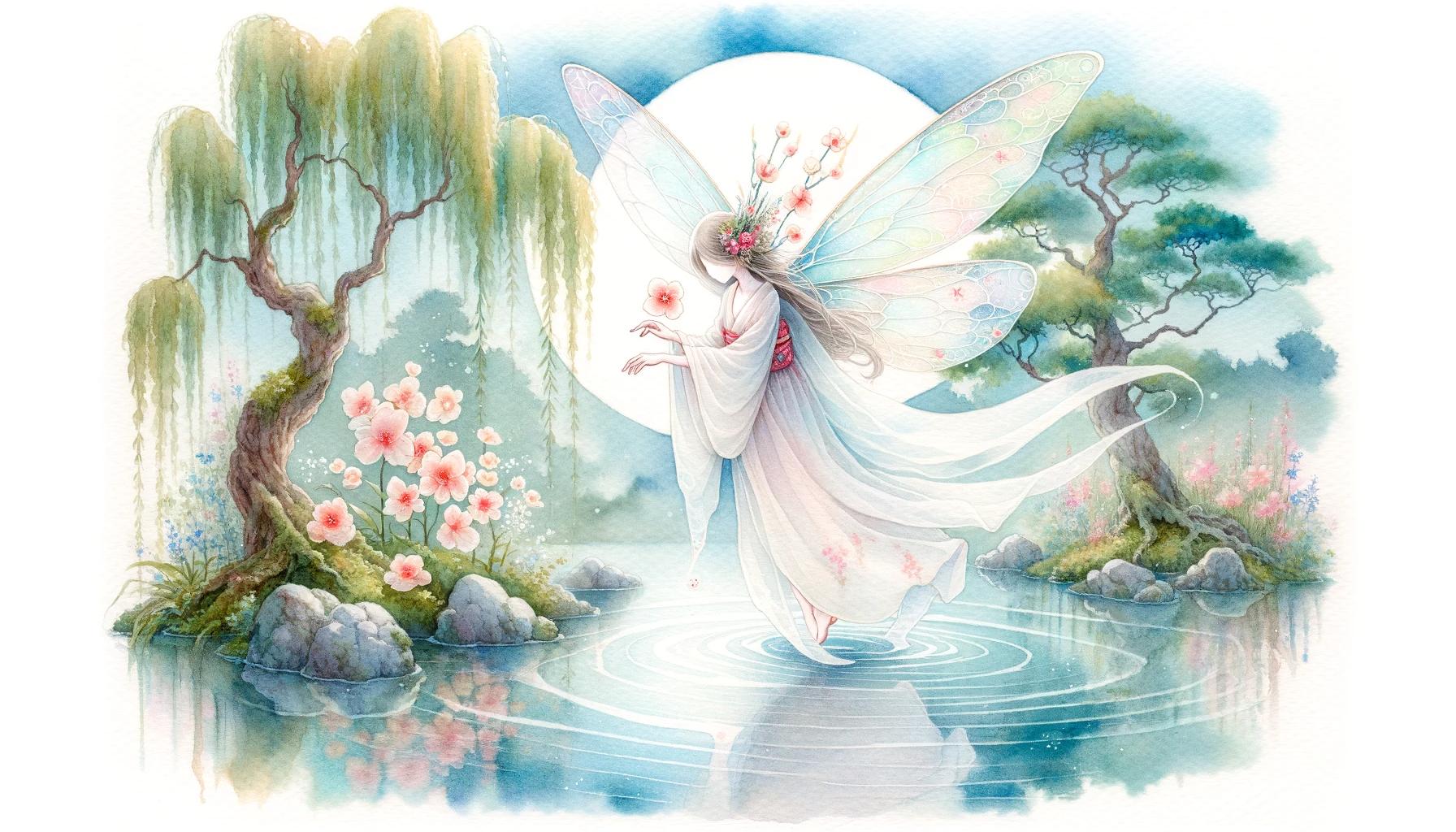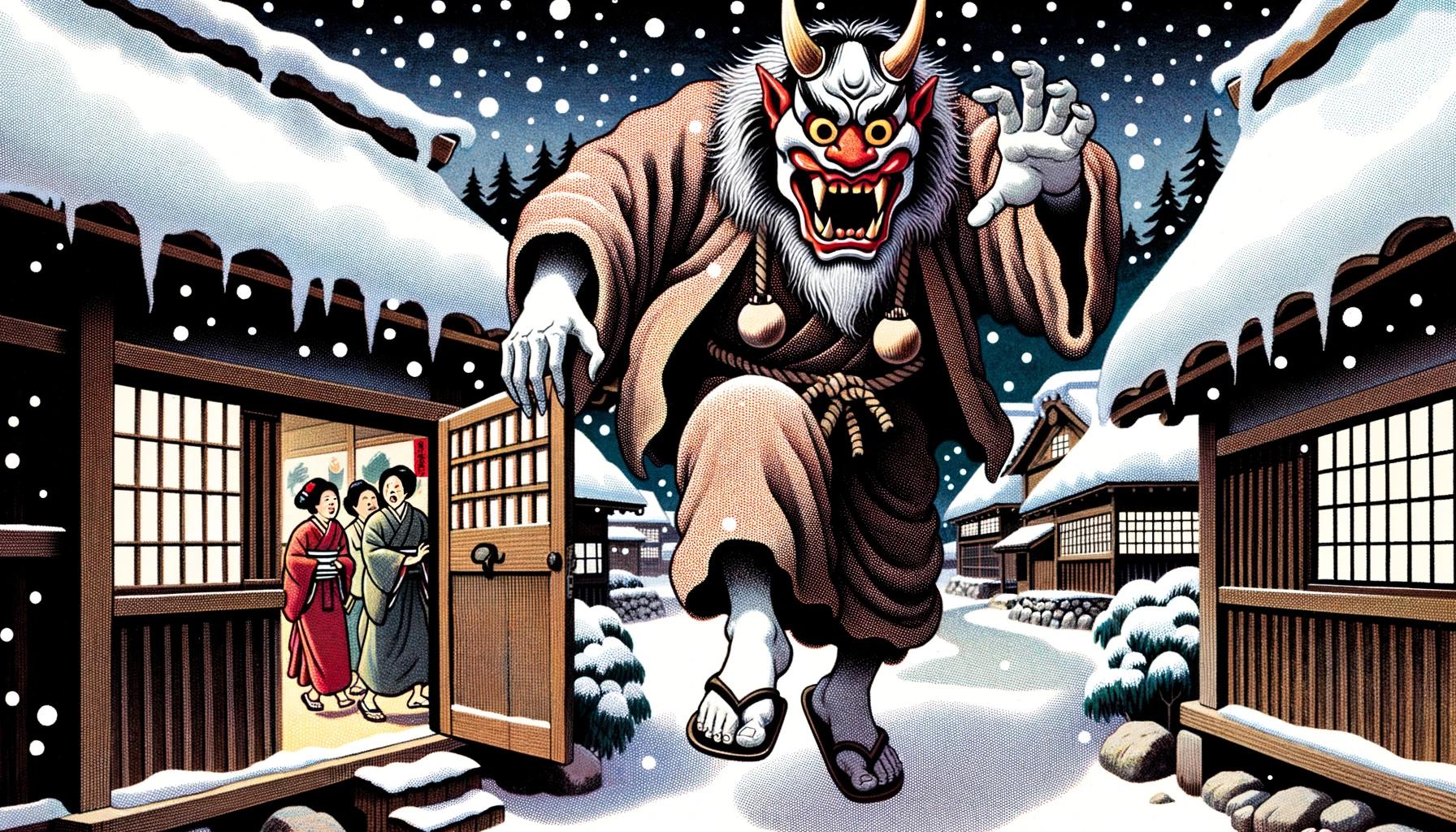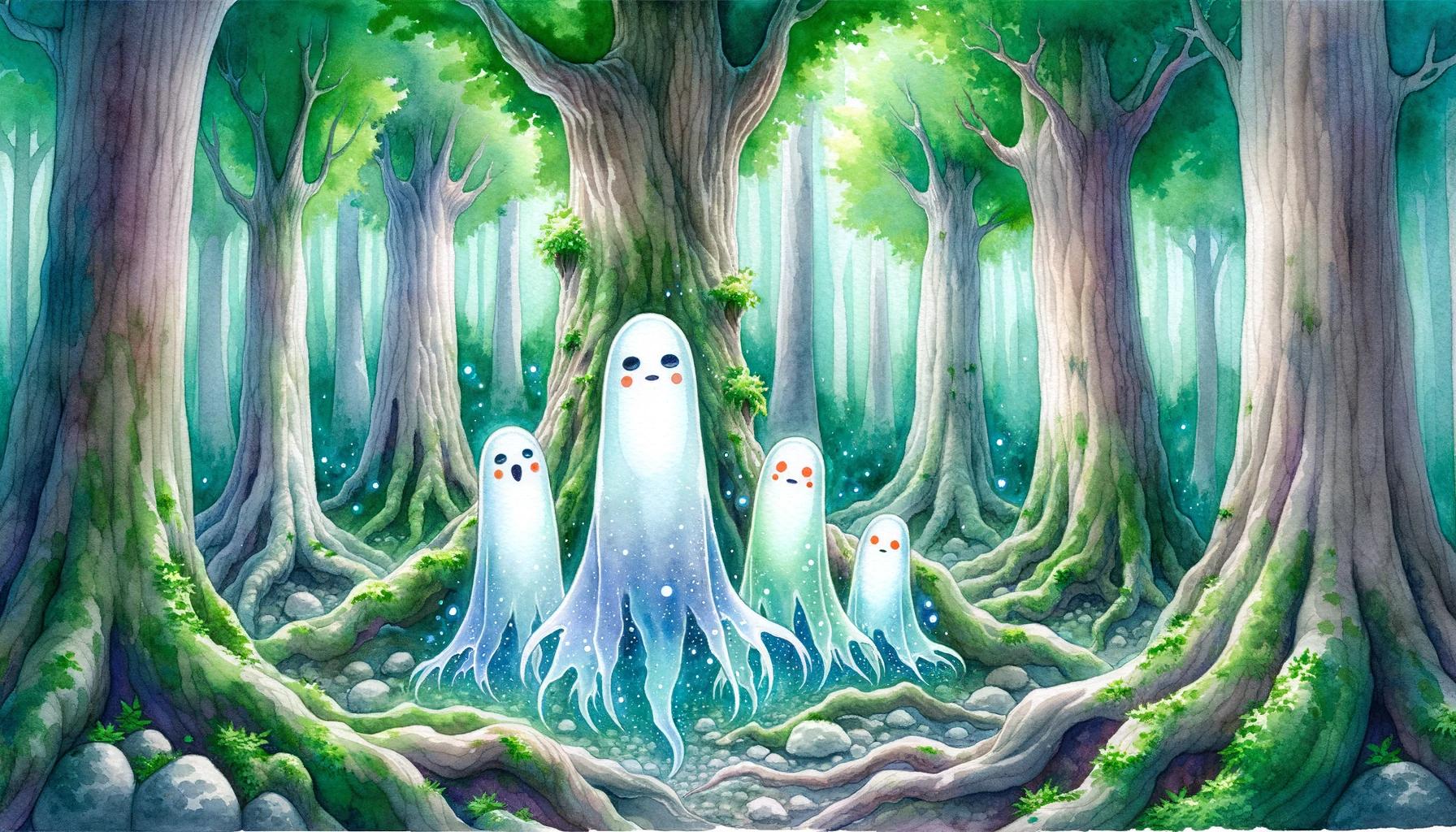Basan Yokai: Mysterious Creatures of Shikoku’s Mountains
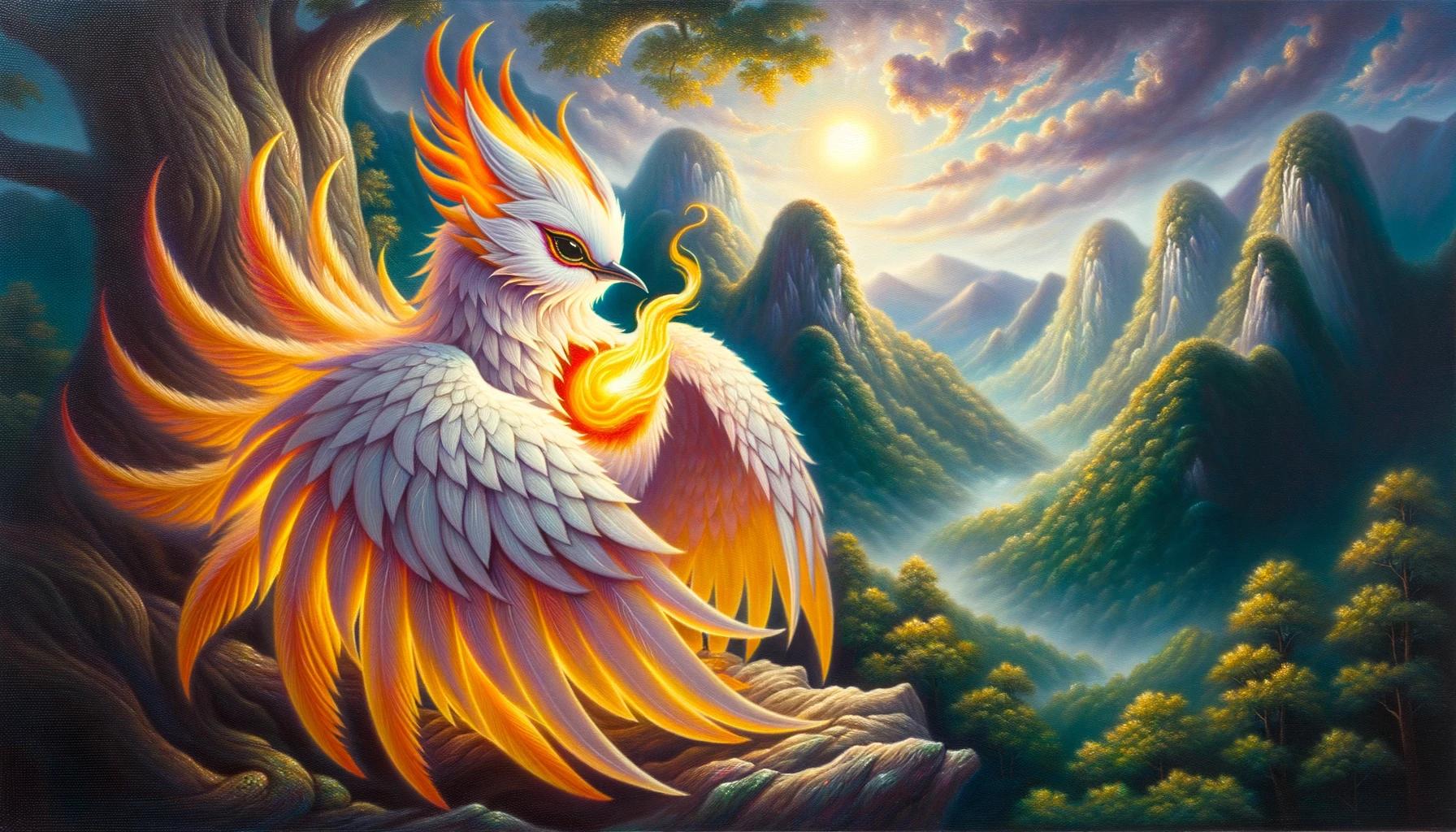
Basan Yokai, a unique and mysterious creature, are found exclusively in the mountains of Shikoku Island, Japan. These avian yokai are known for their striking appearance, with bright red crests and vibrant plumage resembling tongues of flame.
Despite their fiery appearance, Basan Yokai do not possess the ability to ignite or produce heat. Their nocturnal behavior and elusive nature make them a subject of intrigue and folklore.
This article delves into their physical characteristics, habitat, cultural significance, and sheds light on these enigmatic creatures. Let’s explore the fascinating world of Basan Yokai.
Appearance and Characteristics of Basan Yokai
The Basan Yokai is a fascinating creature with unique physical features and remarkable abilities.
Let’s explore their appearance, characteristics, and how they compare to other avian yokai.
Physical Features of Basan Yokai
The Basan Yokai is known for its distinct and captivating appearance. It resembles a chicken or a turkey in size, with a body that is covered in vibrant plumage resembling tongues of fire.
One of its most striking features is its bright red crest that shines brilliantly against its colorful feathers.
This avian yokai’s plumage displays a wide range of intense colors that further enhance its fiery appearance.
These colors vary from shades of red, orange, and yellow, creating a mesmerizing spectacle when observed in person. The Basan Yokai’s feathers almost seem to flicker like flames, adding to its mystique and allure.
Unique Traits and Abilities
Beyond its stunning appearance, the Basan Yokai possesses unique traits and abilities that set it apart from other creatures. One of its notable abilities is its breath, which visibly flows from its mouth like the fire of a dragon.
However, unlike a real fire, it doesn’t produce heat or ignite flammable materials.
The Basan Yokai is predominantly a nocturnal creature, preferring the cover of darkness to roam and explore.
Its behavior during the night remains largely mysterious, as limited research has been conducted into its habits. However, witnesses have reported its distinctive wing flapping sound, known as ‘basabasa,’ when the Basan Yokai feels satisfied or scared.
Comparison with Other Avian Yokai
When considering avian yokai, the Basan stands out as a unique and separate entity. Its fiery appearance distinguishes it from other bird-like creatures in Japanese folklore. While some avian yokai, like Tengu or Karasu Tengu, may share certain characteristics or abilities, their physical appearances and behaviors differ significantly from the Basan Yokai.
The Basan Yokai’s iconic crest, vibrant plumage resembling flames, and breath resembling dragon fire set it apart from other avian yokai.
Each creature in Japanese folklore has its own distinct qualities and legends associated with it, contributing to the richness and diversity of the yokai world.
- Distinctive physical features include vibrant plumage resembling tongues of fire.
- Unique ability to visibly emit breath resembling dragon fire.
- Nocturnal nature and mysterious behavior.
- Distinct sound produced by wing flapping when satisfied or frightened.
While the Basan Yokai shares some similarities with other avian yokai in terms of its nocturnal behavior and special abilities, its appearance and characteristics make it a truly extraordinary and captivating creature in Japanese folklore.
Habitat and Behavior of Basan Yokai
The Basan Yokai inhabit specific natural habitats and display unique behaviors that contribute to their mystical allure. Let’s delve into their fascinating habitat, their nocturnal behavior, and their interactions with humans and the rich folklore that surrounds them.
Natural Habitat of Basan Yokai
Basan Yokai are predominantly found in the remote bamboo forests of Shikoku Island in Japan. These dense and secluded forests provide the ideal environment for these elusive creatures to thrive.
The Basan Yokai prefer to establish their nests and roost in areas far away from human activity, seeking undisturbed solace amidst the bamboo groves.
Nocturnal Behavior and Feeding Patterns
The Basan Yokai are creatures of the night, embracing their nocturnal nature and displaying fascinating behaviors when the moonlight bathes the landscape. Under the cover of darkness, they engage in their feeding patterns, adding to their cryptic reputation.
Their primary source of sustenance revolves around burned wood and embers, captivating observers with their unique taste for charred materials. It is not uncommon for Basan Yokai to scavenge through the remnants of campfires and charcoal piles or lurk around remote villages during the night, seeking the remnants of bonfires and the leftover charcoal.
When sufficiently satiated or startled, Basan Yokai take flight, their wings beating with a distinct rustling sound, emitting a characteristic ‘basabasa’ noise that has lent its name to these mystical creatures.
Witnesses often report their disappearing act, vanishing into thin air upon realizing they have been observed.
Interactions with Humans and Folklore Stories
Basan Yokai have long been intertwined with Japanese folklore and mythology, captivating the imagination of storytellers throughout history. Several legends and tales revolve around encounters with these enigmatic creatures, leaving a lasting impact on local communities.
The folklore surrounding Basan Yokai often portrays them as mischievous but harmless entities. Stories depict them as elusive beings, appearing briefly to bestow blessings upon individuals or as omens of good fortune.
However, they are equally known to tease and play tricks on unsuspecting humans, leaving behind an air of fascination and wonder.
Through generations, Basan Yokai have become an integral part of Japanese culture, their presence celebrated through art, literature, and various forms of media.
They serve as a source of inspiration for artists, providing a canvas to express the ethereal beauty and mystique associated with these remarkable yokai.
Overall, the habitat and behavior of Basan Yokai offer a glimpse into the captivating world of these nocturnal creatures, their elusive nature and interactions with humans fueling the rich folklore and mythical tales that have endured over time.
Folklore and Cultural Significance of Basan Yokai
The Basan Yokai holds a prominent place in Japanese folklore and mythology, captivating the imaginations of the locals for generations. Its enigmatic nature and distinct physical features have led to various intriguing legends and beliefs surrounding this unique creature.
Basan Yokai in Japanese Folklore and Mythology
In Japanese folklore and mythology, the Basan Yokai is often associated with supernatural phenomena and mysterious occurrences. It is believed to possess spiritual powers and is often regarded as a messenger between the mundane world and the spiritual realm.
According to ancient tales, encountering a Basan Yokai is seen as both a blessing and a warning, as its presence is believed to bring good fortune to those who show reverence, but also misfortune to those who disrespect it.
Legends and stories often depict the Basan Yokai as guardians of sacred places and ancient artifacts, entrusted with protecting the balance between the human world and the spirit world. They are said to possess immense wisdom and are revered as divine creatures that possess insights into the mysteries of the universe.
Role of Basan Yokai in Local Legends and Beliefs
The Basan Yokai plays a significant role in local legends and beliefs, particularly in the regions where it is said to reside. Communities have passed down tales of encounters with the Basan Yokai through generations, creating a rich tapestry of folklore that adds to the cultural heritage of the area.
Many legends speak of the Basan Yokai as protectors of the forests, ensuring the harmony between humans and nature. It is believed that their presence brings prosperity to the surrounding lands and grants blessings to those who respect and honor the natural world.
Some legends also associate the Basan Yokai with agricultural abundance, as it is believed to bless crops and ensure bountiful harvests. Rituals and ceremonies are often conducted by local communities to appease and seek the favor of these mythical creatures, ensuring their continued benevolence and protection.
Depictions in Art, Literature, and Media
The Basan Yokai has captured the attention of artists, writers, and filmmakers, becoming a popular subject in various forms of artistic expression. It has been depicted in traditional artwork, such as ukiyo-e prints and woodblock paintings, showcasing its visually striking appearance and mythical aura.
Literature and poetry have also incorporated Basan Yokai into their narratives, often symbolizing mystery, power, and the enigmatic nature of the supernatural world. Contemporary media, including anime and manga, have explored the fascinating stories and adventures inspired by these creatures, introducing them to new audiences both in Japan and around the world.
The cultural significance of Basan Yokai resonates not only in local folklore but also in the wider artistic and literary traditions of Japan. Its portrayal in various forms of media further solidifies its place as a cherished and enduring symbol of Japanese mythology and cultural heritage.
The Significance of Basan Yokai in Modern Society
Influence on Japanese Popular Culture
The Basan Yokai holds a significant place in Japanese popular culture, serving as inspiration for various forms of media such as literature, art, and entertainment. Its unique appearance and mysterious nature make it a captivating and intriguing subject for storytellers and artists alike.
Basan Yokai has been featured in numerous folktales, manga, and anime, contributing to the preservation and promotion of traditional yokai folklore. Its presence in popular culture not only entertains but also educates the younger generation about the rich heritage and mythical creatures of Japan.
Tourism and Economic Impact
The Basan Yokai has also played a vital role in boosting tourism in the regions where it is believed to exist. Tourists flock to these areas in hopes of catching a glimpse of this elusive creature, driving local economies and supporting small businesses.
Local communities have capitalized on the Basan Yokai’s fame by creating themed attractions, festivals, and merchandise catering to yokai enthusiasts. Through the celebration of yokai folklore, these regions have successfully attracted both domestic and international visitors, providing a significant economic boost.
Conservation Efforts and Preservation of Yokai Folklore
As interest in Basan Yokai and other yokai creatures grows, there has been a renewed focus on the preservation of yokai folklore and the natural habitats associated with these mythical beings.
Conservation organizations and cultural preservation initiatives work tirelessly to protect the ecosystems where the Basan Yokai is believed to reside. This includes efforts to conserve bamboo forests and promote sustainable tourism practices that minimize the impact on the yokai’s natural environment.
In addition, scholars and researchers continue to study yokai folklore, ensuring that these ancient stories and legends are passed down through generations. By documenting and researching yokai, these professionals contribute to the preservation and understanding of Japan’s rich cultural heritage.
The significance of Basan Yokai in modern society extends beyond mere fascination; it plays an integral role in the promotion of tradition, tourism, and environmental consciousness, ensuring that yokai folklore remains an essential part of Japan’s cultural identity.
Frequently Asked Questions about Basan Yokai
Are Basan Yokai Dangerous or Harmless?
Basan Yokai are generally considered harmless creatures in Japanese folklore. While they possess a unique appearance and abilities, there are no records or stories suggesting that they pose any direct danger to humans.
Basan Yokai are known for their distinct behaviors, such as bating their wings and creating a sound known as ‘basabasa,’ but these actions are more curious than aggressive. So, rest assured, encountering a Basan Yokai is not typically considered a dangerous encounter.
Are There Similar Yokai Species to Basan?
While Basan Yokai hold a special place in Japanese folklore, there are other avian yokai that share similarities with them. One such yokai is the Karasu Tengu, known for its crow-like appearance and abilities.
However, it’s important to note that Basan Yokai are unique in their vibrant plumage and fiery breath. Each yokai species holds its own cultural significance and characteristics, making them distinct entities within the rich world of Japanese folklore.
How Can I Spot a Basan Yokai in the Wild?
Spotting a Basan Yokai in the wild can be challenging due to their nocturnal nature and preference for remote bamboo forests. However, if you find yourself exploring the mountains of Shikoku Island during the night, keep an eye out for the distinct red crest and colorful plumage that resemble tongues of fire.
Additionally, listen for the characteristic sound of their wing flapping, creating the ‘basabasa’ noise. Remember, encountering a Basan Yokai is rare, so consider yourself lucky if you catch a glimpse of this elusive creature.
What Cultural Practices or Traditions Are Associated with Basan Yokai?
Basan Yokai hold a significant place in Japanese folklore and have influenced various cultural practices and traditions. In some regions, Basan Yokai are believed to bring good fortune, particularly related to fire and protection against negative energies.
Their association with fire is reflected in festivals and rituals where bonfires are lit to commemorate and celebrate the legends of Basan Yokai. Additionally, artists and craftsmen often depict Basan Yokai in their works, showcasing the cultural significance and appreciation for these mythical creatures.
What Can We Learn from Basan Yokai?
The Basan Yokai provide us with an opportunity to delve into the rich tapestry of Japanese folklore and cultural heritage. They remind us of the vivid imagination and creativity embedded in ancient legends.
Moreover, the fascination surrounding Basan Yokai opens doors for exploration and understanding of different yokai species, their symbolic meanings, and the importance of preserving folklore. Exploring these mythical creatures can offer valuable insights into historical traditions, human psychology, and the power of storytelling in shaping cultures and societies.
.











